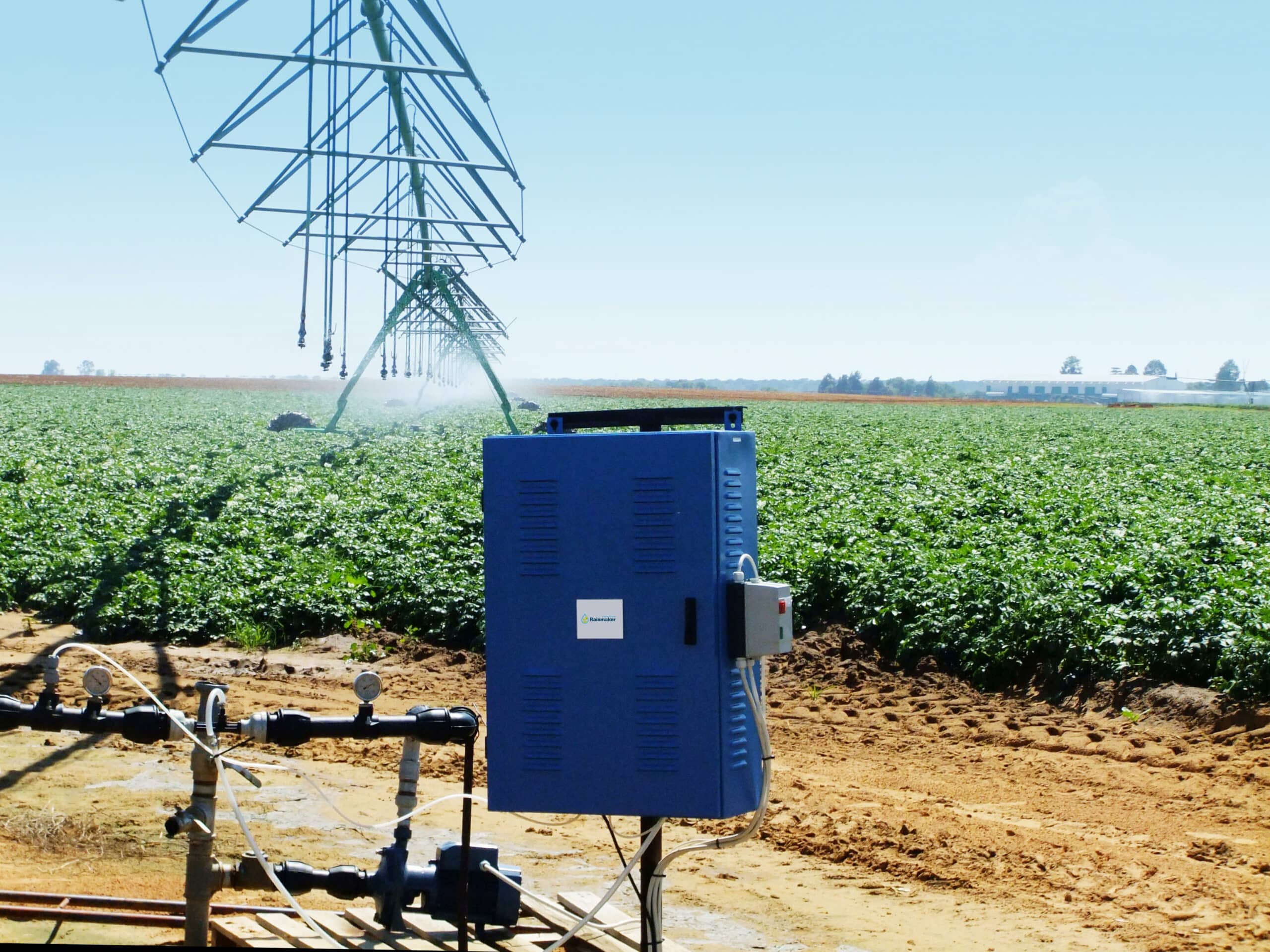The Rainmaker irrigation system mimics rain making irrigation systems better for spuds.
What is the difference between rain and irrigation? You may say, well one I turn on to water my spuds and the other happens sporadically, but there’s more to it. Irrigation is simply water, while rainwater on the other hand has molecules in it that assist in plant growth. You may not think this makes a huge difference, but it does leading one company to package that all up and sell it.
“We built a machine that mimics that process of sunlight absorption in the upper atmosphere and transference of those molecules into rainwater. We achieve those same molecular changes of air and force it under pressure into the irrigation line of the farmer. These molecules then react with the minerals, metals, the fertilizer and many other components in the water. Nutrients are made available to the plants and soil microbes, by products of oxygen and carbon dioxide stay behind for the microbes and the fungi to use in the soil,” Riaan Kirsten, founder and chief technical officer of Rainmaker.Earth Corp, explains in a Zoom interview.
Kirsten and his team started developing the system 20 years ago in South Africa. Their idea was to oxygenate water so that it would mimic rainwater, through trial and error they developed their system. The Rainmaker system is connected to irrigation pivots and converts the irrigation water to mimic rain using an advanced oxidation process. It combines energized air and small doses of hydrogen peroxide to generate hydroxyl radicals in the treated water.
Once a grower installs the Rainmaker system on their irrigation boom, they’ll notice the water penetrates their soil quicker, Kirsten explains. Plants will also start taking in more nutrients.
“The hair roots of the plant grow rapidly and more abundant because of more oxygen and enhanced aerobic microbial life. And by doing that, when the soil gets two or three inches of rain, that rain penetrates into the soil,” he says.
In 2022, through a mutual connection, Kirsten was introduced to Chris Hunt which is when the product took off. With Hunt at the helm as CEO, Rainmaker is now being launched internationally. Initially the company was called Carbon Cascade but recently changed the name was changed to Rainmaker.Earth Corp.
On Tamminga Farms near Taber, Alta. Bill Tamminga installed a Rainmaker onto one of his irrigation pivots during the 2022 growing season. The processing potato grower right away noticed his crop was staying healthier and greener longer compared to the untreated side. There was also a significant yield increase, with good shape, gravity, and quality for the spuds overall. For the 2023 growing season he bought 10 more units and plans to test them out on his all his potato fields, seed canola, timothy hay and sugar beet crops.
Rainmaker is currently working on developing its dealership footprint to make the system more widely available. Hunt also says they’re working with agronomists to help growers learn more about their product.
“We’re still learning every day on what types of soil what types of plant and what amendments may be needed or changed. So how can I change my fertilizer input? Or can I give different fertilizer, less fertilizer or less water or even more water,” Kirsten explains. Adding his team is also working to make the unit smaller and more efficient.
Header photo — An older version of the Rainmaker system attached to an irrigation boom in a potato field. Photo: Rainmaker.Earth Corp
Related Articles
P.E.I. Releases New Sustainable Irrigation Strategy
Alberta Investing $7 million in East Central Irrigation Project









